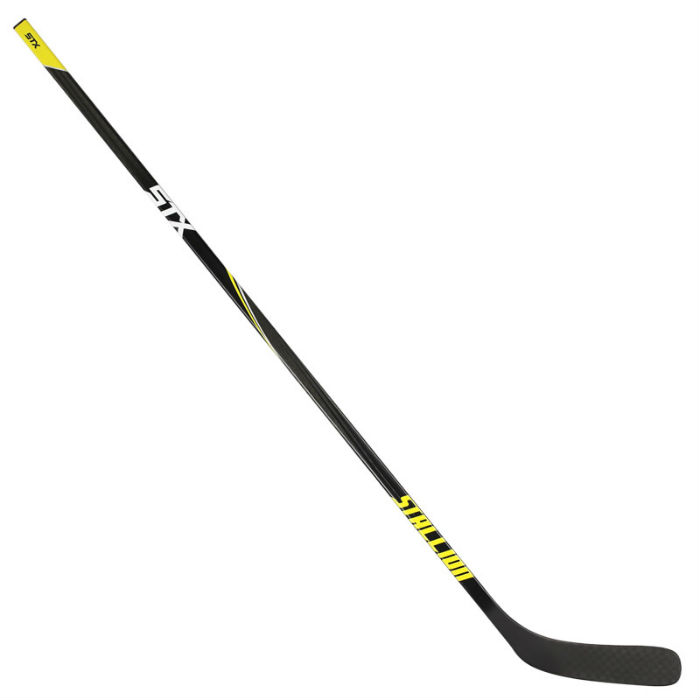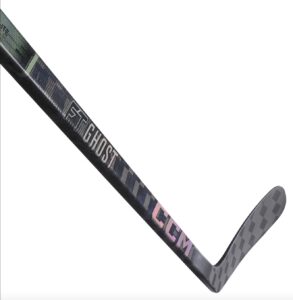 More widely known for their products in the lacrosse world, STX recently decided to make the jump into hockey stick production with the release of their Surgeon 500 and Stallion 500 hockey sticks. The big difference between the two is that the Surgeon boats a dual flex zone, similar to the Bauer APX, while the Stallion utilizes a constant flex profile, more akin to the Bauer Nexus. In addition to our review of the Surgeon, the folks over at STX were kind enough to send a demo Stallion for review.
More widely known for their products in the lacrosse world, STX recently decided to make the jump into hockey stick production with the release of their Surgeon 500 and Stallion 500 hockey sticks. The big difference between the two is that the Surgeon boats a dual flex zone, similar to the Bauer APX, while the Stallion utilizes a constant flex profile, more akin to the Bauer Nexus. In addition to our review of the Surgeon, the folks over at STX were kind enough to send a demo Stallion for review.
The Stallion comes with a nice black/yellow color scheme, similar to the Easton Stealth, with some silver and white accenting. The design isn’t very loud, but certainly recognizable. I had one player at my rink ask me if it was the new STX stick on my very first night using it.
The stick comes in at 428 grams, which is just a hair heavier than the new Easton Synergy HTX, which comes in at 425 grams.
I got the Stallion hockey stick in a 100 flex with an X9 curve, which is a mid-heel curve with an open toe. The stick has a matte grip shaft coating, which is different than other “matte grips” I’ve seen. Instead of literally having a matte finish and calling it a matte grip, the Stallion appears to have some sort of synthetic coating over the shaft that dries to a pearl finish, but still gives it a small amount of grip. I found the grip to be just the right amount. It certainly wasn’t overly sticky by any means, but the coating helped give the stick just the right amount of tack.
STX’s power flex profile gives the Stallion a constant flex over the entire shaft and is designed to maximize energy transfer to the puck. I was surprised how much power I actually generated on slapshots from the point. When I used the Bauer Nexus previously, I felt a lack of power with that stick. I didn’t experience that at all with the Stallion. Even shots where I didn’t completely load up still came off my stick with a good amount of power. But when I had time and space, I was able to really generate some nice-looking shots. I wouldn’t put it at the same level as the RBZ Stage 2 (to be fair, no stick has competed with the power of the Stage 2 yet), but I was very impressed with the power from the Stallion.
The STX Stallion also features the highest balance point of any stick on the market, which is meant to help create a better feel without sacrificing weight or durability. The Stallion was as good as any other top end stick that I’ve used in terms of feel, weight and balance. Again, I was impressed with my confidence using this stick because I could get a good feel for the puck without having to keep my head down constantly. That was a huge help when making breakout passes from my zone or stick-handling through defenders.
My accuracy was spot on, too. Sometimes I find with lower kick-point sticks that I tend to pull the puck a little left of the target. With the Stallion, I was putting my shots right where I wanted them – without sacrificing power.
Overall Impressions:
The Stallion is a solid offering for a player new to the game. It offers similar performance to nearly any other top-end stick I’ve used over the past 12 months, and on several occasions I found myself ditching other sticks I had to demo in favor of the Stallion’s performance.
Unfortunately, the Stallion also carries the high price tag of $259.99 – which is on par with Easton and Bauer’s top-tier equipment. It’s tough to say whether players will shell out that kind of money for a relatively new product over a Bauer, CCM or Easton.
Regardless, for their first foray into hockey stick production, STX has positioned themselves right there with the heavy hitters in terms of performance. This definitely gives the company a solid foundation to build on with future models, and hopefully they expand their lineup to include some lower-tier models for players.


